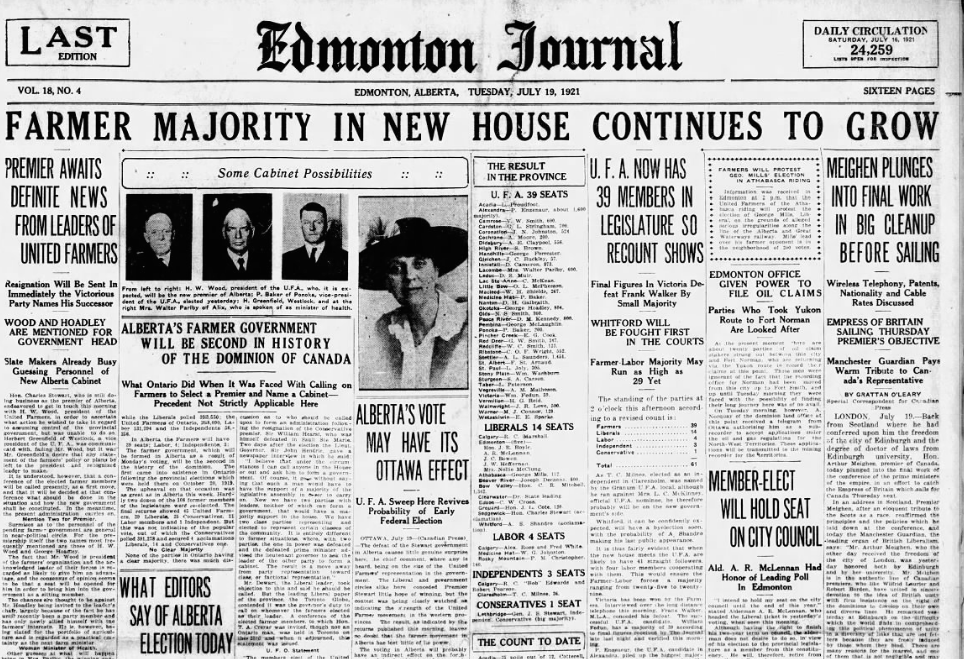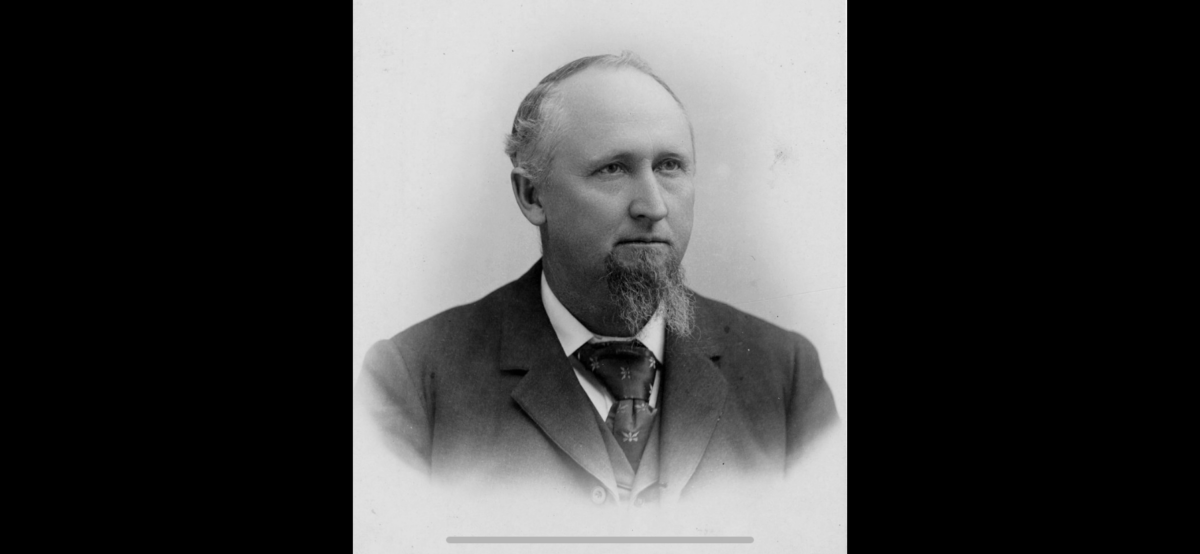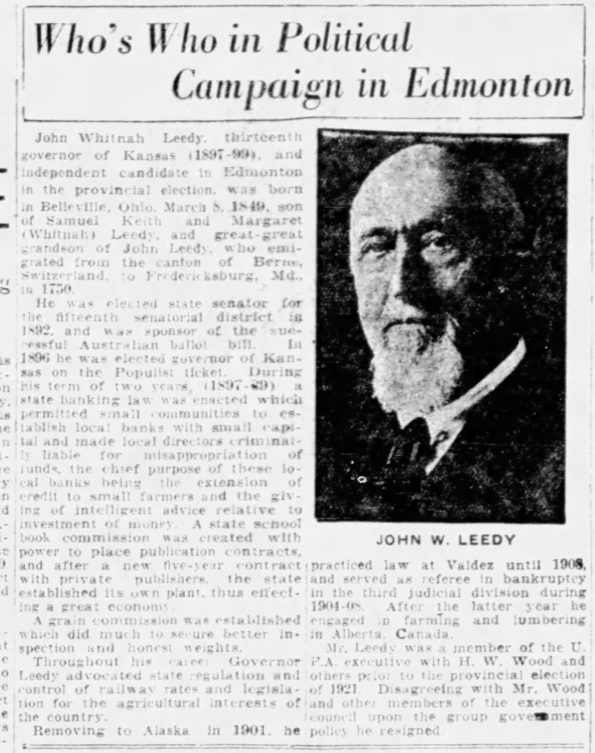“Farmers may not be ready to take over government, but they are going to do it anyway” – Henry Wise Wood, July 8, 1921
A lot of Albertans might recognize the United Farmers of Alberta as a farm-supply retail cooperative with gas stations, fertilizer plants and retail outlets scattered across Alberta, BC and Saskatchewan. But 100 years ago today, the UFA won its first election in Alberta and formed a majority government by shattering the Liberal Party and breaking the mould of provincial politics in the prairies.

The 1921 election marked the first of only five times Albertans have voted to changes parties in government. The results of that election marked the start of Alberta becoming an electoral testing ground for anti-establishment ideologies and political projects.
It would not be until 1971 that a nationally-mainstream and nationally-affiliated party would again form government in Alberta.
Founded in 1909, the UFA was an influential farmers’ lobby group that reluctantly entered electoral politics after years of frustration with the establishment Liberal Party that had governed Alberta since the province was formed in 1905.
Part of a broader national progressive cooperative movement, the UFA was the first of the prairie farmers parties to break through and form government. The United Farmers of Manitoba would form government in 1922 and Saskatchewan would buck the trend until the election of Tommy Douglas‘ Cooperative Commonwealth Federation in 1944.
Until 1921, the Liberal Party had dominated elections in the three prairie provinces, with the Conservative Party only occasionally forming government. A 16-year old Alberta Liberal Party government already damaged by years of internal power struggles and still reeling from the conscription crisis was shocked to be swept out of office.
Thirty-eight UFA MLAs were elected, with 15 Liberal MLAs, 4 Dominion Labour MLAs, 3 Independents and 1 Conservative forming the opposition (one Dominion Labour MLA, Alex Ross, was invited to join the UFA cabinet and served as Minister of Public Works).
Despite the incumbent Liberals winning 34 per cent of the vote compared to 28 per cent for the UFA, the UFA won 38 seats compared to 15 for the Liberals. The lopsided popular vote was due to a new electoral system which gave voters in Calgary and Edmonton the ability to cast votes for five candidates and voters in Medicine Hat the ability to vote for two candidates. The UFA did not run any candidates in the two largest cities.
Being new to electoral politics, the UFA did not actually have an official party leader at the time they won the election (this would become a trend in Alberta politics, as neither did the Social Credit Party when it won in 1935).
Wanting to do politics differently, the newly elected UFA is said to have approached defeated Liberal Premier Charles Stewart to ask if he would remain in the job. Stewart, who had been a member and supporter of the UFA before they became his political opponent, declined.
UFA President Henry Wise Wood also declined, wanting to stay out of the partisan political side of the organization.
UFA Vice-President Percival Baker was next in line, but died one day after being elected as the MLA for Ponoka from injuries caused by a falling tree.
George Hoadley was considered a potential premier due to his previous experience as leader of the Conservative Party, but it was likely his pre-floor crossing connections that cost him the job.
Herbert Greenfield was named interim vice-president after Baker’s death and was selected by the UFA Caucus to become the next Premier. Without a seat in the Legislative Assembly, Greenfield ran in a December 1921 by-election to become the MLA for Peace River.
The UFA’s election also marked the beginning of a political wave that would sweep over Alberta and the prairies, with the UFA-allied Progressive Party electing 8 Members of Parliament in the December 1921 election and forming official opposition in Ottawa.
It’s record as government in Alberta was mixed. It ended prohibition, formed the Alberta Wheat Pool, founded the first provincial parks, and introduced elements of proportional representation into the provincial electoral system. But it was also responsible for the formation of the Alberta Eugenics Board, marking the start of a dark period in our province’s history.
The UFA’s political fortunes would also suffer from the Great Depression and number of high-profile sex scandals that would dog it until the party’s defeat in 1935 and subsequent retreat from politics.
I will be sharing more thoughts over the next few days about the election of the UFA in 1921 and how it reshaped politics in Alberta for decades to come.







